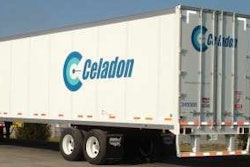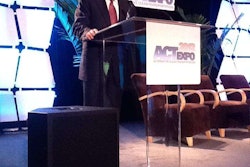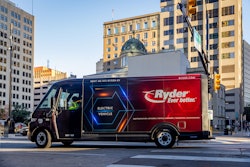
FedEx Express on Wednesday, May 16, announced significant progress toward its goal to make its vehicle fleet 20 percent more fuel-efficient by 2020, adding the FedEx Express vehicle fleet is now 16.6 percent more fuel efficient through fiscal year 2011 than it was in 2005. FedEx Express said 20 percent of the diesel vehicle pickup and delivery fleet already has been converted to more efficient and cleaner-emissions models that comply with 2010 U.S. Environmental Protection Agency diesel emissions standards.
“Although we are less than halfway to the end date we set for ourselves, we have achieved 80 percent of our vehicle fuel efficiency goal as of the conclusion of fiscal year 2011 compared to our original baseline set in 2005,” said Mitch Jackson, staff vice president of environmental affairs and sustainability for FedEx Corp. “As a result, we are reevaluating our 2020 goal to potentially raise the standard we originally set out to achieve.”
“Thanks to this team effort, we have converted 20 percent of our pickup-and-delivery fleet to cleaner and more fuel-efficient models,” said Dennis Beal, vice president of global vehicles for FedEx Express. “By pursuing the most promising avenues of advanced technologies, enlisting multiple experienced manufacturers and optimizing our vehicle operations, FedEx is reducing fuel use and emissions faster than expected.”
• The company said its progress is the result of a number of initiatives:
Upcoming addition of 87 all-electric trucks to its green fleet, bringing the all-electric vehicle count to 130;
• Acceleration of its efforts in fuel conservation through the purchase of vehicles with right-sized engines like the Sprinter vans manufactured by Mercedes-Benz. By the end of fiscal 13, FedEx will have more than 11,000 such vehicles in service, more than 35 percent of its U.S. pickup-and-delivery fleet. Each Sprinter-type van is about 70 to 100 percent more fuel-efficient than the original truck it replaces;
• Addition of 114 Reach composite-body trucks manufactured from advanced materials by Utilimaster on an Isuzu Motors chassis with an appropriately-sized engine. The lower weight design, along with the engine, is expected to save up to 35 percent in fuel over most conventional walk-in vans;
• Testing of FedEx Ground hybrid-hydraulic parcel delivery vehicles that can reduce fuel usage by 40 percent; and
• Testing of six standard delivery vehicles retrofitted with all-electric drivetrains from various suppliers, including AMP, Smith Electric and Freightliner Custom Chassis Corp.
The electric truck initiative is aimed not only at improving FedEx fleet efficiency, but also in accelerating the development of all-electric trucks that could compete favorably with traditional vehicles for all users. “While we naturally want to improve performance and reduce costs for FedEx, we also want to see all-electric trucks become more affordable and reliable for everyone from your local pizza parlor to other small businesses that deliver,” said Jackson. “This is a strategy for reducing reliance on petroleum-based fuels in a much faster, more inclusive and impactful way.”
FedEx chairman and CEO Frederick W. Smith is co-chair of the organization Securing America’s Future Energy (SAFE). Smith has long been focused on the use of domestic fuel sources, including electricity, to power urban vehicles in the United States.










